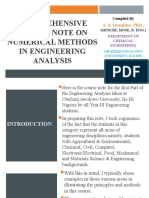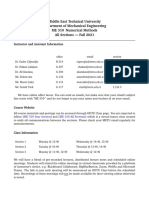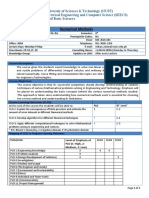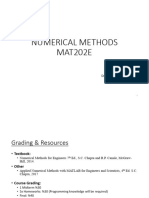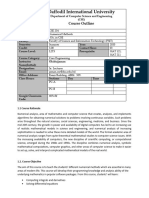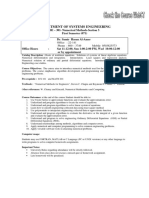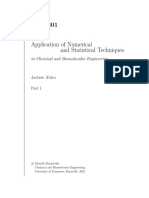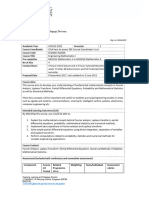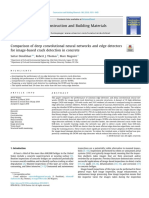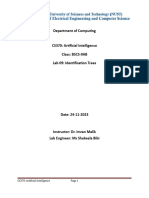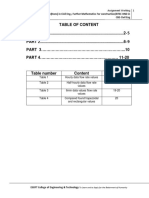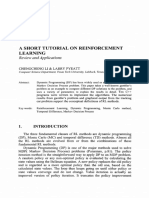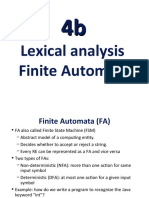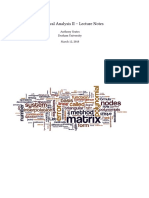0% found this document useful (0 votes)
15 views23 pagesLecture 1
The document outlines the course CL249 for Autumn 2025, taught by Prof. Swati Bhattacharya, focusing on coding and numerical methods. Students are expected to write their own code without the aid of AI tools, and the grading consists of 70% for weekly assignments and 30% for a written exam. Key topics include numerical algorithms, Python programming, and various mathematical methods relevant to engineering problems.
Uploaded by
tanmoy010904Copyright
© © All Rights Reserved
We take content rights seriously. If you suspect this is your content, claim it here.
Available Formats
Download as PDF, TXT or read online on Scribd
0% found this document useful (0 votes)
15 views23 pagesLecture 1
The document outlines the course CL249 for Autumn 2025, taught by Prof. Swati Bhattacharya, focusing on coding and numerical methods. Students are expected to write their own code without the aid of AI tools, and the grading consists of 70% for weekly assignments and 30% for a written exam. Key topics include numerical algorithms, Python programming, and various mathematical methods relevant to engineering problems.
Uploaded by
tanmoy010904Copyright
© © All Rights Reserved
We take content rights seriously. If you suspect this is your content, claim it here.
Available Formats
Download as PDF, TXT or read online on Scribd
/ 23









